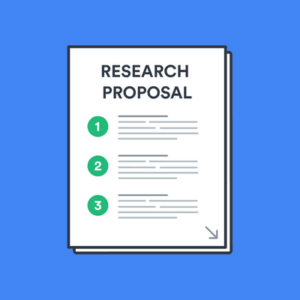Are you struggling with the daunting task of writing an MBA dissertation and wondering how to write a dissertation that will meet the high standards of your academic institution? You’re not alone in facing this challenge. Many students, at the outset, find themselves overwhelmed by the intricacies of this significant academic undertaking.
In this comprehensive guide, we’ll address your concerns and provide you with invaluable insights on how to write a dissertation that not only fulfills your academic requirements but also empowers you to excel. We’ll break down the entire process into manageable steps, helping you select the right topic, develop a compelling research proposal, navigate the complexities of research, structure your dissertation effectively, and refine your writing.
By the end of this guide, you’ll possess the knowledge and confidence needed to tackle your MBA dissertation with precision and ease, transforming it into a remarkable academic achievement. Let’s embark on this journey together and unravel the secrets of how to write a dissertation that stands out.
Key Steps to Write a Stellar MBA Dissertation

Chapter 1: Selecting the Perfect MBA Dissertation Topic
Choosing the right topic is the foundation of a successful dissertation. Here are some key considerations when selecting your MBA dissertation topic:
1.1. Interest and Passion:
When embarking on your MBA dissertation journey, selecting a topic that genuinely piques your interest is paramount. Your enthusiasm for the subject matter will serve as a driving force, keeping you motivated and focused throughout the often lengthy and challenging research and writing process. Remember, your passion will shine through in your work, making it more engaging and persuasive.
1.2. Relevance:
Your chosen topic must be intrinsically relevant, both to your field of study and the current business environment. To create a meaningful contribution to the field, and address issues or gaps in knowledge that are of interest to the business community. This not only adds academic value but also practical significance, potentially attracting the attention of industry professionals.
1.3. Feasibility:
Before finalizing your topic, assess the feasibility of conducting research on it. Consider the availability of data, resources, and access to information related to your chosen subject. Ensure it’s something you can realistically investigate within the confines of your dissertation, given your time and resource constraints. Avoid topics that are too broad, too narrow, or logistically impractical.
Chapter 2: Crafting a Solid Research Proposal

Once you’ve selected your topic, the next step is to create a compelling research proposal. Here’s how to do it effectively:
2.1. Title: Develop a concise and informative title that captures the essence of your research.
Example: Suppose your chosen topic is “Analyzing the Impact of Digital Marketing on Small Business Growth.” A concise and informative title could be “Digital Marketing’s Influence on Small Business Growth: An In-depth Analysis.”
2.2. Problem Statement: Clearly define the problem or research question your dissertation will address.
Example: The problem statement for the topic above might be: “Small businesses are facing increasing competition in the digital age. This research aims to understand the specific ways digital marketing strategies affect their growth and sustainability.”
2.3. Objectives: State the objectives of your research and what you aim to achieve.
Example: Objectives could include:
- “To analyze the various digital marketing strategies used by small businesses.”
- “To evaluate the impact of digital marketing on customer acquisition and retention for small businesses.”
- “To provide recommendations for small businesses seeking to enhance their digital marketing efforts.”
2.4. Literature Review: Provide a review of existing literature related to your topic to demonstrate the relevance of your research.
Example: In this section, you would summarize relevant studies, such as “Smith et al.’s (2020) research on the effectiveness of social media marketing for small businesses,” and explain how your study builds upon existing knowledge.
2.5. Methodology: Explain the research methods and techniques you’ll use.
Example: You might outline your plan to conduct surveys and interviews with small business owners and analyze data using statistical tools to assess the impact of various digital marketing strategies.
2.6. Timeline: Outline a realistic timeline for completing your dissertation.
Example: Create a timeline that breaks down your research and writing process into manageable stages. For instance, “Conduct surveys and interviews (Month 1-2), Data analysis (Month 3-4), Dissertation writing (Month 5-6).”
Chapter 3: Conducting Thorough Research
Research is the backbone of your dissertation. You should use a variety of sources and methods to gather relevant data:
3.1. Primary and Secondary Data:
Collect both primary data (interviews, surveys) and secondary data (academic papers, industry reports).
3.2. Data Analysis:
Employ appropriate statistical and analytical tools to interpret your data accurately.
3.3. Ethical Considerations:
Ensure your research adheres to ethical guidelines and consider factors like informed consent a nd data privacy.
Chapter 4: Structuring Your MBA Dissertation

The structure of your dissertation is critical for clarity and coherence. A well-structured MBA dissertation typically follows this format:
4.1. Introduction:
Your introduction serves as the gateway to your research journey. In this section, you set the stage by providing context for your study and an overview of what your dissertation will encompass. Your introduction should be engaging and captivate the reader’s interest. It should also clearly state your research question or objectives.
4.2. Literature Review:
The literature review is the foundation upon which your research is built. It’s here that you summarize and critically evaluate existing literature related to your topic. The literature review demonstrates your awareness of prior work in the field and highlights the gaps or areas where your research contributes.
4.3. Methodology:
In this section, you explain the nuts and bolts of your research process. Describe the methods and techniques you employed for data collection and analysis. This is where you justify your chosen research methods and discuss their appropriateness for addressing your research question.
4.4. Findings:
After laying the groundwork in the literature review and methodology, the findings section presents the empirical results of your research. Utilize tables, graphs, or textual descriptions to display your data. Ensure that the presentation is clear and organized to facilitate easy understanding and interpretation by the reader. saffronexch
4.5. Discussion:
The discussion section is where you delve into the analysis of your findings. Interpret the results and discuss their implications. Relate your findings back to your research objectives, showing how your research contributes to the broader understanding of the topic. It’s also a place to address any unexpected results or limitations in your study.
4.6. Conclusion:
In the conclusion, you bring your dissertation to a close by summarizing the key points and insights from your study. Reiterate the significance of your research and its implications for your field. Offer some practical recommendations if applicable. The conclusion should leave the reader with a clear understanding of the importance of your work and a sense of closure.
Chapter 5: Writing and Editing Your Dissertation
The writing and editing phase is where you turn your research into a well-crafted document:
5.1. Clarity: Write in a clear, concise, and academically appropriate style. Avoid jargon and overly complex language.
5.2. Citations: Properly cite all sources using a consistent citation style (e.g., APA, MLA, or Chicago).
[Also Read the Importance of Referencing in Academic Writing]
5.3. Proofreading: Carefully proofread your dissertation for grammar, spelling, and formatting errors.
5.4. Coherence: Ensure your content flows logically, and each section transitions smoothly to the next.
5.5. Feedback: Seek feedback from peers or advisors to improve the quality of your dissertation.
Chapter 6: Final Steps and Submission
In the final stages of your MBA dissertation, you should:
6.1. References: Compile a comprehensive list of references.
6.2. Appendices: Include any necessary appendices, such as surveys or detailed data, for reference.
6.3. Abstract: Write an informative abstract that summarizes your dissertation concisely.
6.4. Formatting: Ensure your document complies with your institution’s formatting guidelines.
6.5. Submission: Follow the submission instructions provided by your university.
Conclusion
Writing an MBA dissertation is a demanding but rewarding endeavor. By carefully selecting your topic, conducting thorough research, and following a well-structured approach, you can produce a dissertation that not only meets academic standards but also contributes to the broader understanding of your chosen field. Remember that perseverance and attention to detail are key to your success. Best of luck in your MBA dissertation journey!
Frequently Asked Questions (FAQs)
1. What is a MBA dissertation?
An MBA dissertation is a research project that students pursuing a Master of Business Administration degree must complete. It’s crucial because it demonstrates your ability to apply business concepts to real-world problems and contributes to your academic and professional growth.
2. Does an MBA have a dissertation?
Yes, many MBA programs require students to complete a dissertation or a similar research project as part of their degree requirements. The dissertation is a significant component, showcasing their ability to apply business concepts in a practical setting.
3. What should I write in my MBA dissertation?
In your MBA dissertation, focus on a well-defined research question relevant to your field, conduct thorough literature review, apply appropriate research methods, and present findings, analysis, and conclusions that contribute to your chosen area of business or management.
4. How long is an MBA dissertation?
The length of an MBA dissertation can vary, but it typically ranges from 10,000 to 20,000 words. The exact word count often depends on your program’s requirements and the complexity of your research topic.


